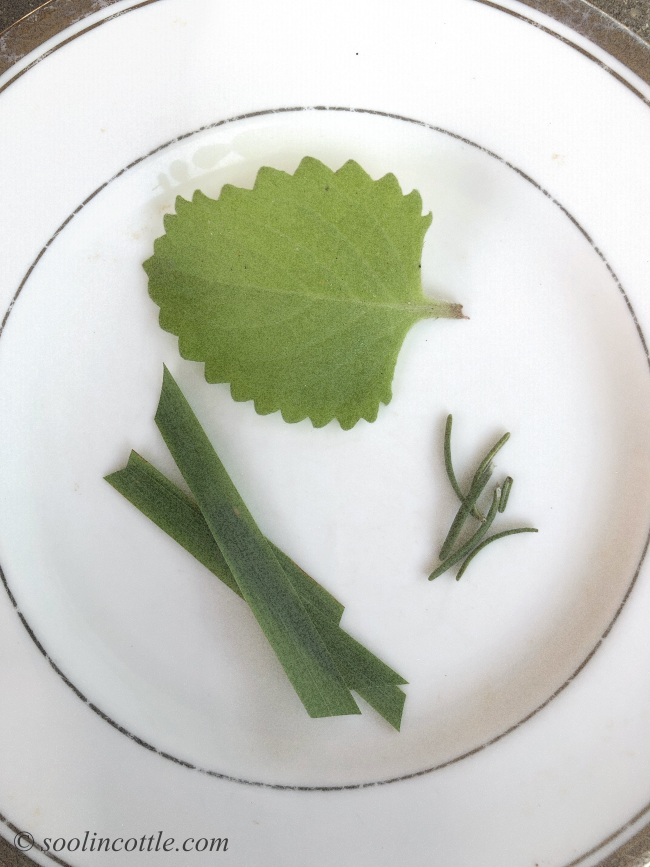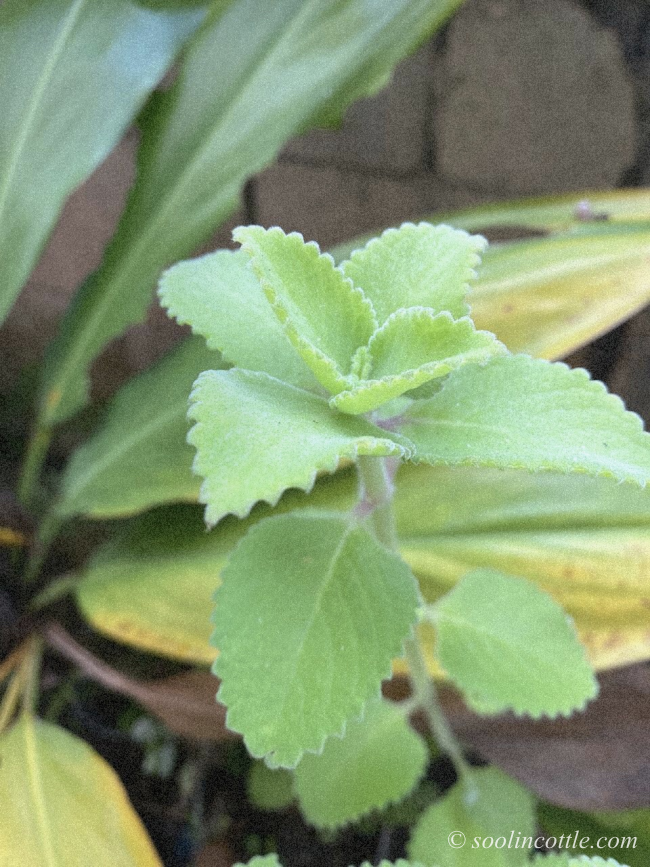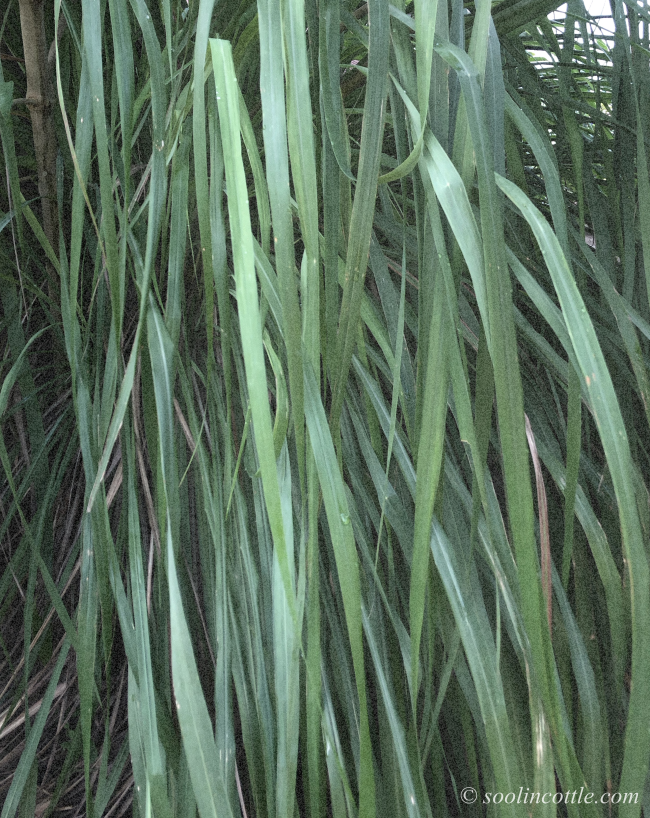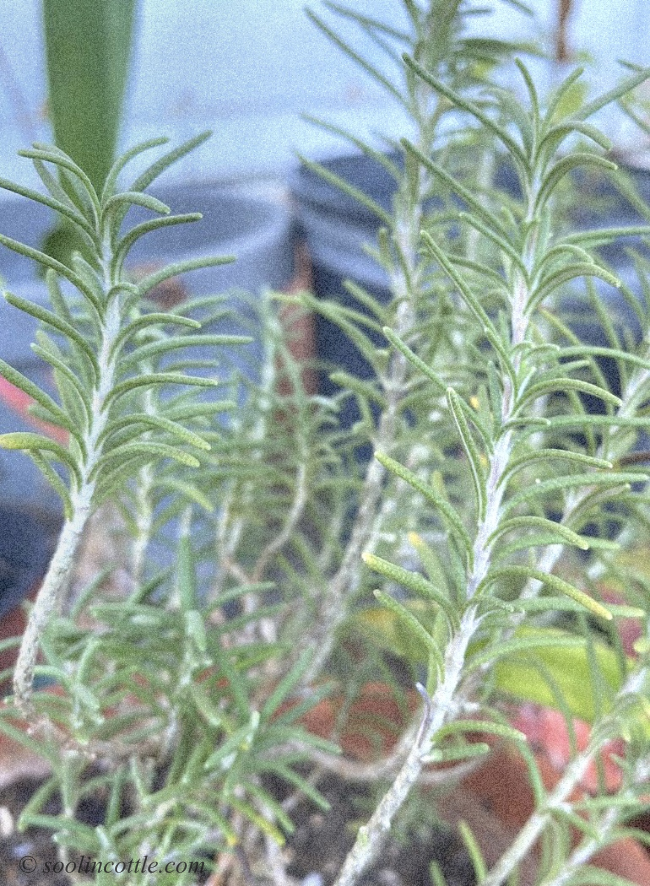As wandering mists dissolve slowly in silence back into the ethereal realms, the early morning sun sends sparkling light trails to gently wake the forces of nature following a night’s restorative slumber. Accompanied by a soft, warm breeze that causes each leaf, branch and flower in the garden to sway in the rhythm of a lullaby, this peaceful time is ideal for collecting herbs to make tea.
My understanding, from the research papers that I’ve been reading, is that the best time to harvest plants, in terms of obtaining the highest concentration of essential oil and/or the essential oil with the highest amount of active ingredients, depends on several factors including the time of year/the season and the time of day. (Please see appendix 1 at the end of this post for a list of articles about this topic).
My favourite times of the day for collecting herbs are the early morning or evening. I find these the most peaceful and restorative times. With gratitude to the Holy Spirit and the plants themselves, I collect the minimum number of leaves that I need. I very much hope that cutting the leaves does not cause the plants any pain or discomfort. Although plants don’t have a nervous system or pain receptors like ours, there is ongoing debate about whether or not plants feel distress in response to external stimuli. (Please see appendix 2 at the end of this post for a list of articles about this). Nevertheless, I endeavour to remove leaves from the plants as gently and quickly as possible to try and minimise any potential discomfort this might cause. It is a conundrum.
Recently I’ve been making tea with Spanish thyme, lemongrass and rosemary. The recipe I’ve been using to make one cup is:
1 medium sized leaf of Spanish thyme
2 teaspoons of lemongrass
Around five leaves of rosemary

About the plants

SPANISH THYME
Plectranthus Amboinicus
(also known as Cuban oregano)
Family: Lameaceae
The Spanish thyme plant has a thick and woody yellow-green stem. The leaves have soft hairs on the top surface and they feel like a plush velvet. The plant’s scent is easily released by gently running your fingers over the leaves. It has a warming, comforting fragrance that is both herbaceous and spicy.
Spanish thyme contains several phytochemicals including monoterpenoids, diterpenoids triterpenoids, sesquiterpenoids, phenolics, flavonoids and esters.[1] Evidence suggests that the leaves may have antimicrobial, anti-inflammatory, and antioxidant properties.[2]
LEMONGRASS
Cymbopogon citratus
Family: Poaceae
This huge lemongrass plant started out life as a small cutting from a kind neighbour. The leaves have a mild citrus-woody scent with a strong floral top note.
The most biologically active compounds in lemongrass extracts are flavonoids that may have several pharmacological effects including antioxidant effects, anti-inflammatory effects, relief of stress and improvement of digestion. Evidence suggests that lemongrass may also have antimicrobial properties.[3] Locally, it is used as a traditional herbal medicine for fever and is also known as fever grass.


ROSEMARY
Salvia rosmarinus
(previously Rosmarinus officinalis L.)
Family: Lamiaceae
The rosemary plant has a thick woody stem and slender, olive green leaves that resemble pine needles. The leaves have a warming, herbaceous-woody scent.
Studies suggest that rosemary may have antimicrobial, antioxidant and anti-inflammatory properties.[4] Potential beneficial effects on health may include aiding memory, relief of pain, improvement of digestion and anti-aging effects. Constituents that are biologically active include carnosic acid, ursolic acid, alpha pinene, caffeic acid, rosmarinic acid, carnosol, rosmadial and oleanolic acid. The essential oil contains at least 140 compounds including flavonoids, phenolic acid, carnosic acid, and ursolic acid, which are the precursors of antioxidant plant derivatives.[5]
All photographs taken by me
*Disclaimer: The information in this post is for educational and informational purposes only. It is not intended as a substitute for professional medical advice and does not create a doctor-patient relationship. Please consult your doctor or other qualified healthcare professional if you have any medical concerns or questions, before making any decisions about your healthcare or for guidance about any medical condition. If you believe that you are having a medical emergency please call the hospital or emergency services. Do not disregard or delay seeking professional medical advice because of something you read on this website. Your use of information on this website is solely at your own risk.*
References
- Arumugam G, Swamy MK, Sinniah UR. Plectranthus amboinicus (Lour.) Spreng: Botanical, Phytochemical, Pharmacological and Nutritional Significance. Molecules. 2016;21(4):369. Published 2016 Mar 30. doi:10.3390/molecules21040369 Available under CC BY
- Barbosa MO, Wilairatana P, Leite GML, et al. Plectranthus Species with Anti-Inflammatory and Analgesic Potential: A Systematic Review on Ethnobotanical and Pharmacological Findings. Molecules. 2023;28(15):5653. Published 2023 Jul 26. doi:10.3390/molecules28155653 Available under CC BY
- Tazi A, Zinedine A, Rocha JM et al. Review on the pharmacological properties of lemongrass (Cymbopogon citratus) as a promising source of bioactive compounds. 2024;3. Pharmacological Research – Natural Products. doi.org/10.1016/j.prenap.2024.100046 Available under CC BY 4.0
- Andrade JM, Faustino C, Garcia C, Ladeiras D, Reis CP, Rijo P. Rosmarinus officinalis L.: an update review of its phytochemistry and biological activity. Future Sci OA. 2018;4(4):FSO283. Published 2018 Feb 1. doi.org/10.4155/fsoa-2017-0124 Available under CC BY
- Aziz E, Batool R, Akhtar W et al. Rosemary species: a review of phytochemicals, bioactivities and industrial applications. S Afr J Bot. 2022 (151-B); 3-18. doi.org/10.1016/j.sajb.2021.09.026 Available under CC BY 4.0
Appendix 1
- Rathore S, Mukhia S, Kapoor S, Bhatt V, Kumar R, Kumar R. Seasonal variability in essential oil composition and biological activity of Rosmarinus officinalis L. accessions in the western Himalaya. Sci Rep. 2022;12(1):3305. doi:10.1038/s41598-022-07298-x
- de Almeida LF, Portella Rde O, Bufalo J, Marques MO, Facanali R, Frei F. Non-Oxygenated Sesquiterpenes in the Essential Oil of Copaifera langsdorffii Desf. Increase during the Day in the Dry Season. PLoS One. 2016;11(2):e0149332. doi:10.1371/journal.pone.0149332
- Cheng Y, Fu Y, Gu D, Huang Y, Lu Y, Liu Y, Li X, Yao X, Zhang X, Jian W, Liu P, Wu H, Li Y. Seasonal Variation in Chemical Composition and Antioxidant and Antibacterial Activity of Essential Oil from Cinnamomum cassia Leaves. Plants (Basel). 2024 Dec 30;14(1):81. doi: 10.3390/plants14010081.
- Marques, S. P. P. M., Pinheiro, R. O., Nascimento, R. A. D., Andrade, E. H. A., & Faria, L. J. G. (2023). Effects of Harvest Time and Hydrodistillation Time on Yield, Composition, and Antioxidant Activity of Mint Essential Oil. Molecules (Basel, Switzerland), 28(22), 7583. https://doi.org/10.3390/molecules28227583
Appendix 2
- Draguhn A, Mallatt JM, Robinson DG. Anesthetics and plants: no pain, no brain, and therefore no consciousness. Protoplasma. 2021;258(2):239-248. doi:10.1007/s00709-020-01550-9
- Lamers J, van der Meer T, Testerink C. How Plants Sense and Respond to Stressful Environments. Plant Physiol. 2020;182(4):1624-1635. doi:10.1104/pp.19.01464
- Muday GK, Brown-Harding. Nervous system-like signaling in plant defense. Science 361,1068-1069(2018). doi:10.1126/science.aau9813
- Masatsugu Toyota et al. Glutamate triggers long-distance, calcium-based plant defense signaling.Science 361,1112-1115(2018). doi:10.1126/science.aat7744
